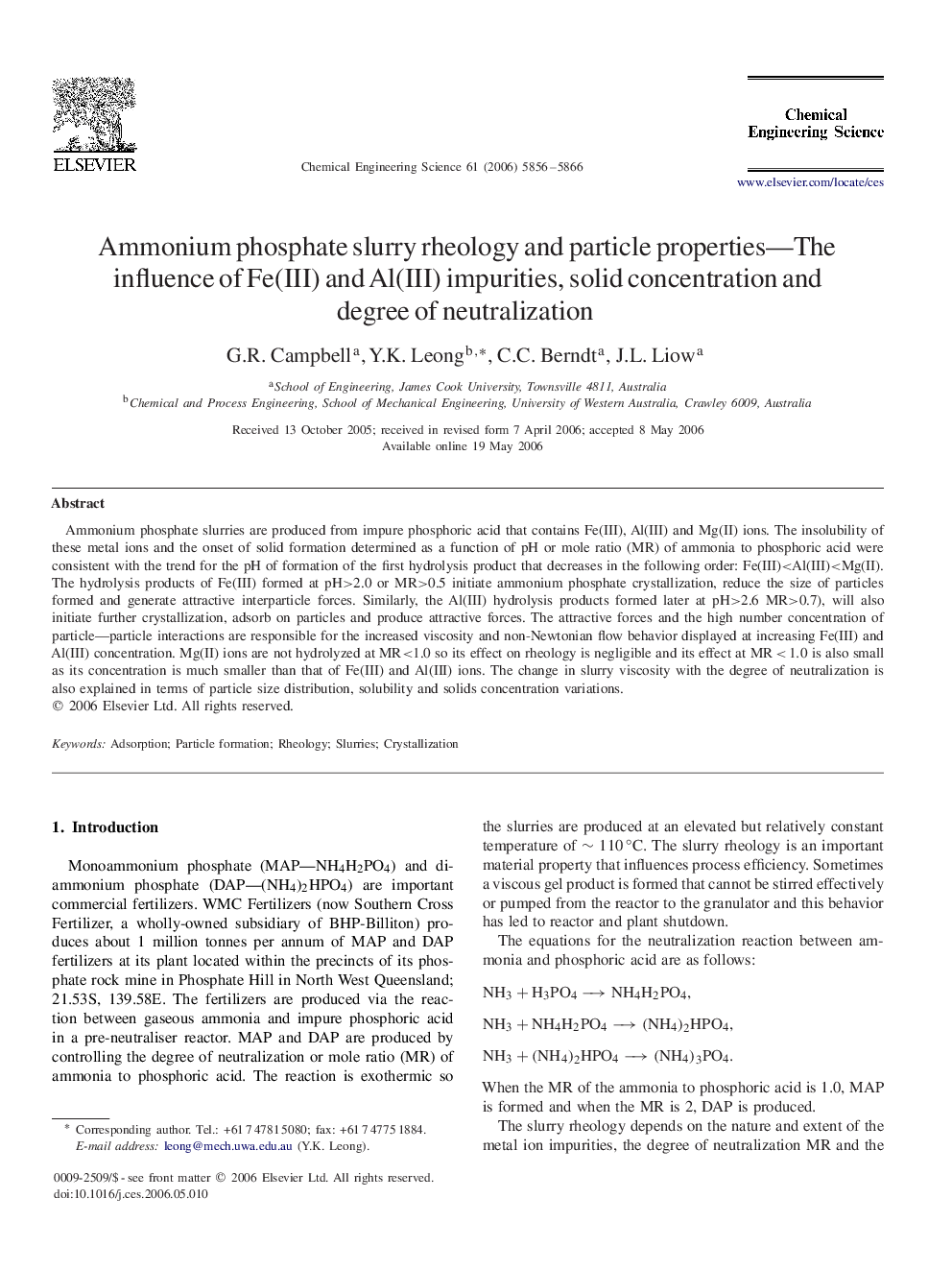| Article ID | Journal | Published Year | Pages | File Type |
|---|---|---|---|---|
| 159822 | Chemical Engineering Science | 2006 | 11 Pages |
Ammonium phosphate slurries are produced from impure phosphoric acid that contains Fe(III), Al(III) and Mg(II) ions. The insolubility of these metal ions and the onset of solid formation determined as a function of pH or mole ratio (MR) of ammonia to phosphoric acid were consistent with the trend for the pH of formation of the first hydrolysis product that decreases in the following order: Fe(III)<
